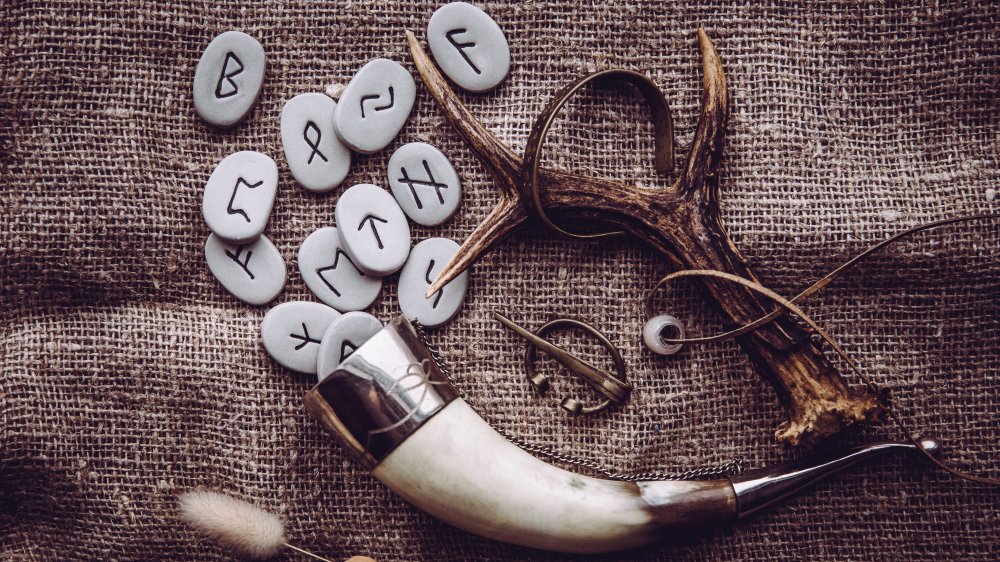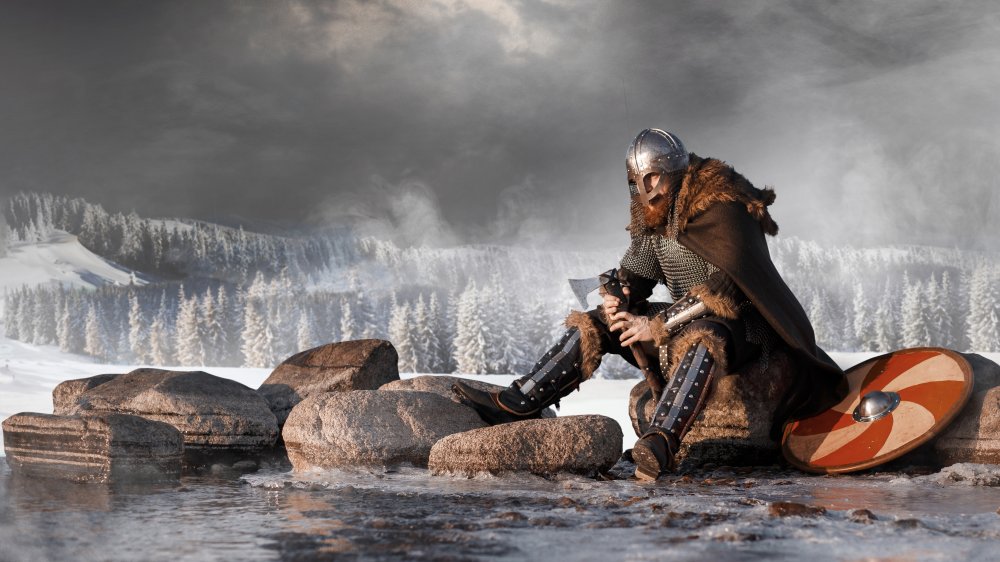The Truth About The Secret Code Used By The Vikings
Gotta love a good story about a good code getting good and cracked. Whether it's Alan Turing deciphering Nazi code systems during World War II, or someone connecting the dots of the Rosetta Stone, or just you and your friends making up a special code to pass notes in third grade (didn't everybody do that?), there's that sense of mystery, that feeling of being just a bit smarter than the average bear. A language you don't share with a wider circle is a kind of code, a way to communicate that's specific to you and those in on the secret.
A code, or another language, is frequently helpful, especially if you're the parents and you're trying to tell each other where you stashed the Halloween candy without the kids finding out. Not that that would ever happen. And Vikings, being just like us, really, though usually carrying more cutlery than we do, also delighted in codes.
Vikings used rune codes to relay information and to entertain
We know this because one of their codes, jötunvillur, survived, unbreached, for a good many centuries — all the way until 2014, actually. The jötunvillur code dates back to around the 12th or 13th Century, The Guardian tells us, using runes. Although today we think of runes as being somewhat mystical, in fact they're more like an alphabet — a written depiction of spoken communication. Jötunvillur, as Germanic Mythology tells us, was indecipherable for centuries. There were a few examples here and there — around nine, all told — and K. Jonas Nordby of the University of Oslo, Norway, set out to study them all and perhaps learn their secrets.
Learn them he did. The runeologist noticed that one stick had the names of two different people — and the two names were written in the regular runic alphabet, but also the jötunvillur code. Call it the "Rosetta Stick." From that Nordby went on to break the code. The Independent reports Henrik Williams, a runes expert from Uppsala University, calling the discovery "pure detective work."
Sometimes the rune codes relayed information, but some of the inscriptions also seem to be more playful, challenging the reader to interpret them correctly. The discovery is ongoing; as Nordby said, "We still know very little about the use of runic codes, so that each new piece of information is important."

